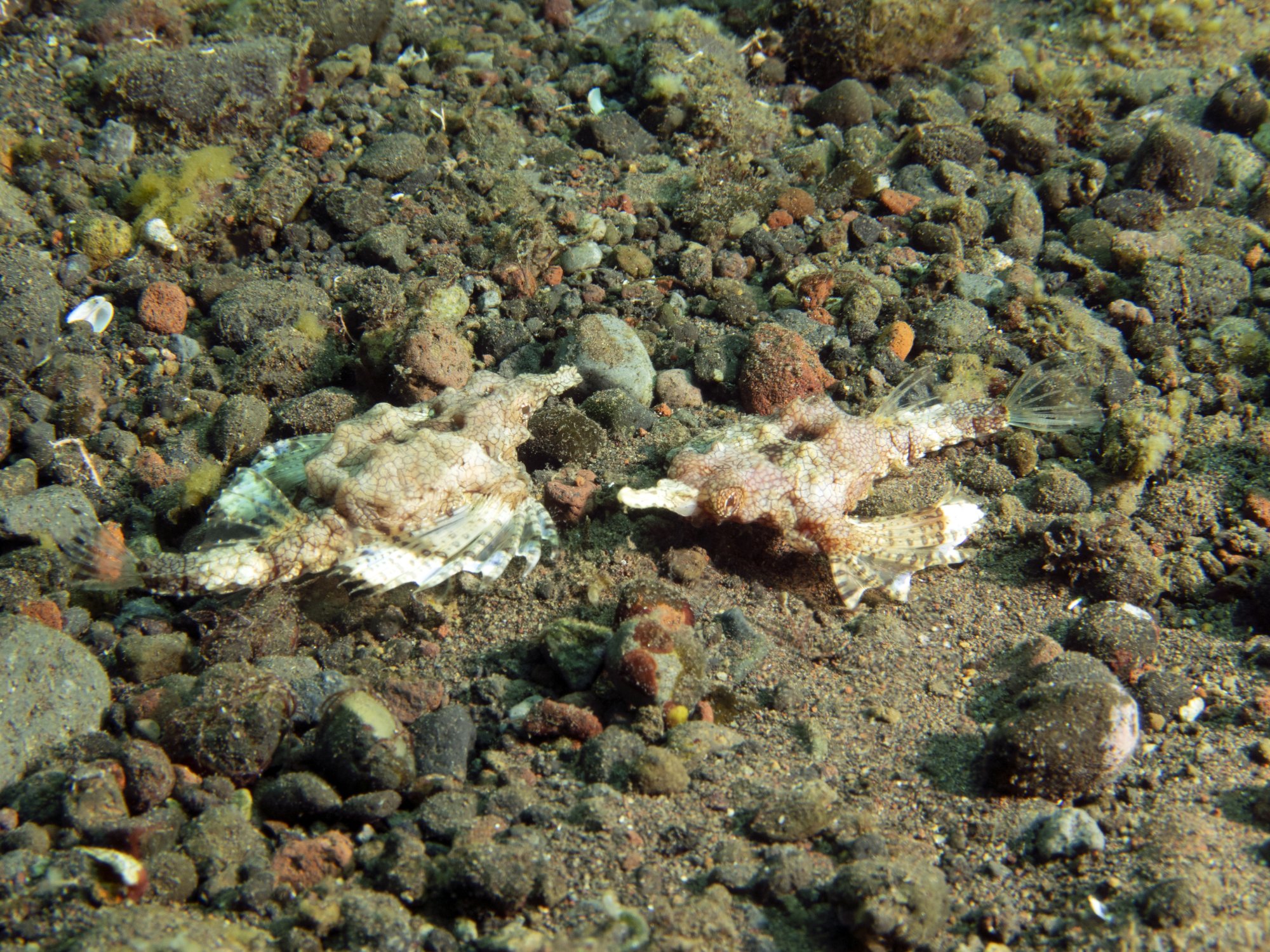Seamoth
Pegasus of the sea
The seamoth is a unique marine species in both looks and behavior. Seamoths belong to the Pegasidae family of fish which derive their name from the Greek animal, Pegasus. They clearly resemble this famous mythological creature thanks to their flattened bodies, long snout, and large, wing-like pectoral fins. In China, these fascinating fish are called dragon fish, and for a good reason.
You can primarily find seamoths along the Indo-Pacific’s tropical coastline. They like to use their modified pelvic fins to “walk“ across the sea floor and hunt using their ventral jaws as tubes to suck worms and other small invertebrates from their burrows. Diving with seamoths can be challenging - their small size and camouflaging abilities can make them hard to see, and their small population size makes them even harder to find. Explore the dive site map below to see where you can dive with seamoths.
Dive Sites with this Animal View more on map

★★★★☆ El Quadim
The El Quadim house reef is located directly in the bay of the Mövenpick Hotel El Quseir and has an eventful past with its 5000 years of history (originally the oldest trading port in Egypt, the old amphorae & anchor). Very easy to dive with a large bay of 4 m depth with a north and south side and a deeper area.

★★★★☆ Zerib Kebir
A beautiful dive site with a lot of canyons inside the reef and small caves. The entrance is from the sandy shore. Amazingly colorful coral gardens and rich in marine life are found here.

★★★★★ Coral Garden / Gassous Bay
Nice house reef with a north and south side. Easy access from the beach. No boat traffic! No current and diveable in any weather. Night and early morning dives are possible daily!

★★★★☆ Marsa Umm Gerifat South
Snorkelers and divers can enter the park via the jetty/zodiac, speedboat, or beach. The entrance is very easy because you enter the water from a staircase. This site is a slowly sloping reef with many plateaus and up to 40m depth. There is a beautiful canyon at 6 - 18m. Training platforms at 2,3,5 and 9m.

★★★★☆ Abu Sawatyr
Bay with sandy entry. The sandry bottom is slow downgoing till 40 meters. On both sides are coral gardens will 30 meters. A rope is helpful to enter and exit the dive site by current.

★★★★☆ Gato Island
Gato Island is a well preserved marine reserve and sea snake sanctuary. This is one of the five famous dive sites on the Island. The site is a tunnel where you take a tour underneath the island. This site is best for more experienced divers/
